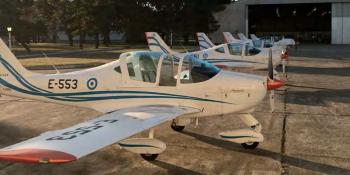The new security situation that emerged after the fall of the Berlin Wall in 1989 made it more likely that Dutch units would be deployed further afield, on the periphery of NATO’s borders or, more likely, beyond them. The need for adequate air transport capacity became even more critical. A defence memorandum of 1991 recommended replacement of the outdated Fokker F27 fleet by a combination of transports offering greater strategic and tactical mobility. To meet this need, the Dutch defence ministry acquired four aircraft types: the C-130H-30, Fokker 60 and Fokker 50 for tactical requirements, and a pair of KDC-10 tanker-transports for strategic missions. The KDC-10s have been in Koninklijke Luchtmacht (Royal Netherlands Air Force, RNLAF) service since 1995 and will be replaced by the new Airbus A330 Multi-Role Tanker Transport (MRTT) from next year.
Diverse squadron
The KDC-10s are assigned to 334 Squadron, which traces its lineage back to the Air Transport Service established as an Anglo-Dutch initiative on June 27, 1944. After World War Two, the squadron was based at Valkenburg. Following periods at Ypenburg and Soesterberg, it finally moved to Eindhoven Air Base in May 1992.
When the Netherlands bou…


